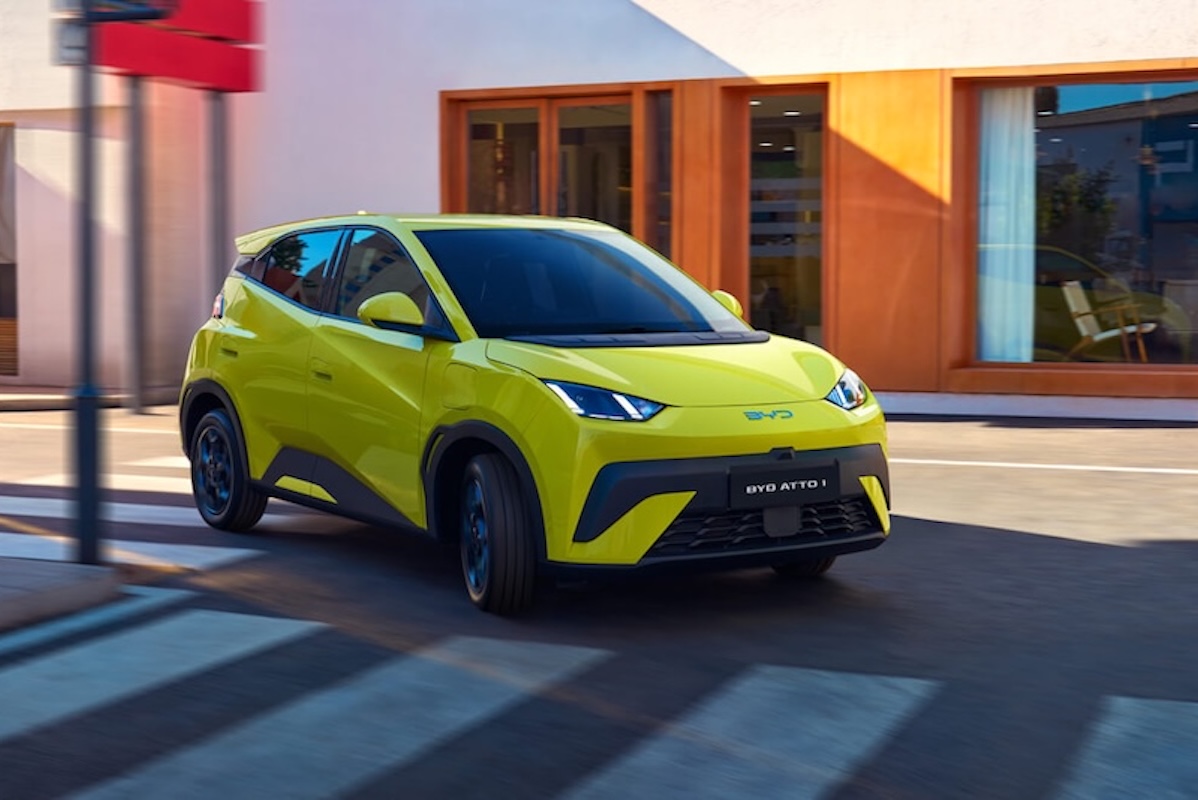

Pricing for the upcoming BYD ATTO 1 has landed. As expected, it's the newest title-holder of "Australia's cheapest electric car". Coming in at $23,990 it's a low sticker to be sure, but that's only part of the story. Here’s what you get for your money.
I think these three questions are the most important when you're buying a new car in 2025. Especially if it's electric. How far can it travel before needing to be recharged? How does it achieve that, and how comfortably will you be able to do it all? Doesn't matter if a car can travel 1000km before it needs to be recharged if the interior is the same quality as an old chook shed. Similarly, if you're travelling in Rolls Royce-style comfort but can only go a handful of metres before needing to plug in.
So where does the ATTO 1 stack up? Well, it depends on which model you choose.
Before we get to what sets these two apart, first, here's what's the same.
Both are powered by a 35kWh lithium iron phosphate battery, offering a claimed driving range of 320km (NEDC). In real-world city driving, expect closer to 250km before a recharge. Nervous nellies will probably want to plug in even sooner. Its single front-mounted electric motor generates 70kW of power and 180Nm of torque. BYD lists 0-100km/h in just under 12 seconds, making it more for urban traffic rather than highway overtaking. Or drag races, but you get the point.
Charging is handled by a Type 2 AC port which puts electrons back into your battery at a maximum of 7kW (read: slowly). Or, there's a CCS2 DC fast-charging option for those on the go that will get you up to 40kW (read: fast-ish, but nothing compared to a Tesla or a Porsche). And of course that all depends on whether you can find 40kW charging speeds when you're on the road. If you can, an 80% top-up takes about 40 minutes on a fast charger. The slower 7kW option found in home wallboxes takes around six hours from 0-80% charged.
While both Essential and Premium versions of the BYD ATTO 1 share the same motor, battery and core technology, the differences are obvious as soon as you open the door or look at the feature list.
The Essential is all about keeping costs down. You get 16-inch alloy wheels, fabric seats and manual air conditioning. The steering wheel is finished in basic plastic, and you adjust the driver’s seat manually. Rear parking sensors are included, but there’s no front sensor or extra driver assistance tech beyond the basics.
Move up to the Premium and the experience changes. The wheels jump up to 17 inches and chrome trim replaces the Essential’s black exterior highlights. Inside, you swap fabric for synthetic leather and add features like heated front seats, a leather-wrapped wheel and automatic climate control. There’s a power-adjustable driver’s seat, a powered tailgate and ambient interior lighting—touches you’d expect in cars well above this price.
Infotainment gets a subtle boost, too. Both get a 10.1-inch touchscreen with Apple CarPlay and Android Auto, but the Premium adds a better sound system with extra speakers. Rear seat passengers pick up their own air vents and a centre armrest, missing from the base car.
The biggest changes come in safety and driver assistance. The Premium brings blind-spot monitoring, rear cross-traffic alert, front parking sensors and a 360-degree camera. These aren’t available on the Essential, which sticks to AEB, lane keep assist, adaptive cruise and a reversing camera.
he ATTO 1 rides on 16-inch alloy wheels and is equipped with LED headlights, keyless entry, a 10.1-inch touchscreen with Apple CarPlay/Android Auto, air conditioning, reverse camera, digital radio and a basic suite of safety tech: AEB, lane keeping and adaptive cruise. Not bad for the money, really.
The ATTO 1 measures 4,050mm long, 1,760mm wide and 1,570mm tall, putting it squarely in the city car class. That makes it shorter than a Toyota Yaris but taller and roomier inside, closer to the likes of a Kia Stonic or Suzuki Ignis. Boot capacity is 270 litres, which matches other city cars but lags behind some slightly larger hatchbacks like the MG 3 or Mazda 2.
The interior fits four adults comfortably, though the rear row is best for two. The cabin is pared back but doesn’t feel spartan, with most expected tech features standard.
Considering the price, the BYD ATTO 1 does give you a lot bundled in. The MG4 Excite 51 starts at $39,990, while the GWM Ora Standard is $30,000-plus. Even the cheapest petrol Yaris or Suzuki Swift now costs around $25,000 drive-away, so the BYD is not only the lowest-priced EV but among the most affordable new cars out there for 2025/26.
You do miss out on some features that are common in more expensive cars, though. It's to be expected for $23,990, right?
Heated seats, advanced driver aids (like blind-spot monitoring and rear cross-traffic alert), and a banging sound system are all absent. The battery is tiny by modern EV standards, and the DC fast-charging speed is much lower than what you’ll find in a Tesla or Kia EV6.
The warranty, however, is five years/unlimited km (battery eight years/160,000km), which is on par with the segment but not outstanding.
But for $23,990, the BYD ATTO 1 makes a compelling case for the budget buyer. It's sleek, it's teched-up, and it's a full EV and not a plug-in hybrid. Just remember: it's a city car, rather than a kilometre-killer on the nation's highways.